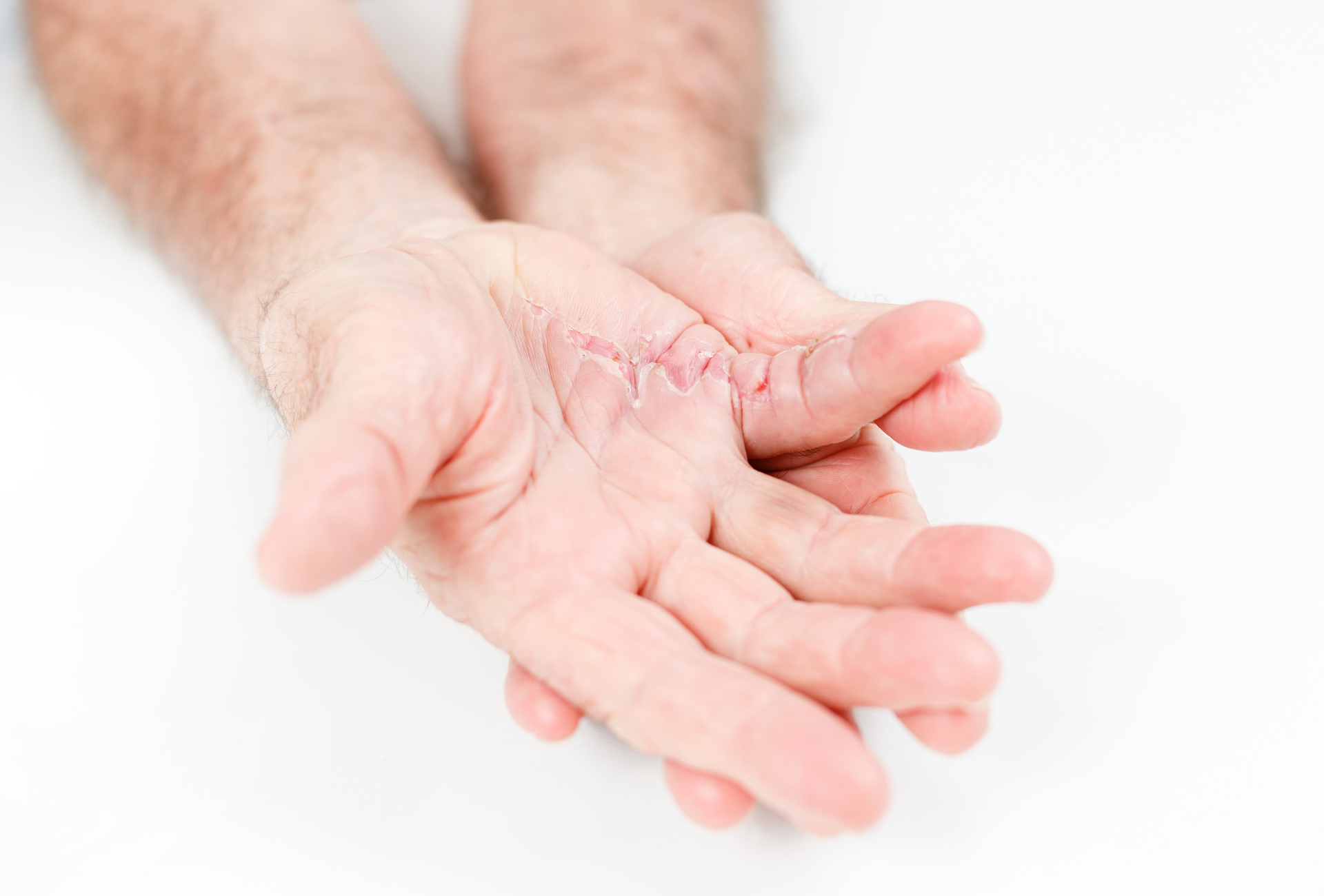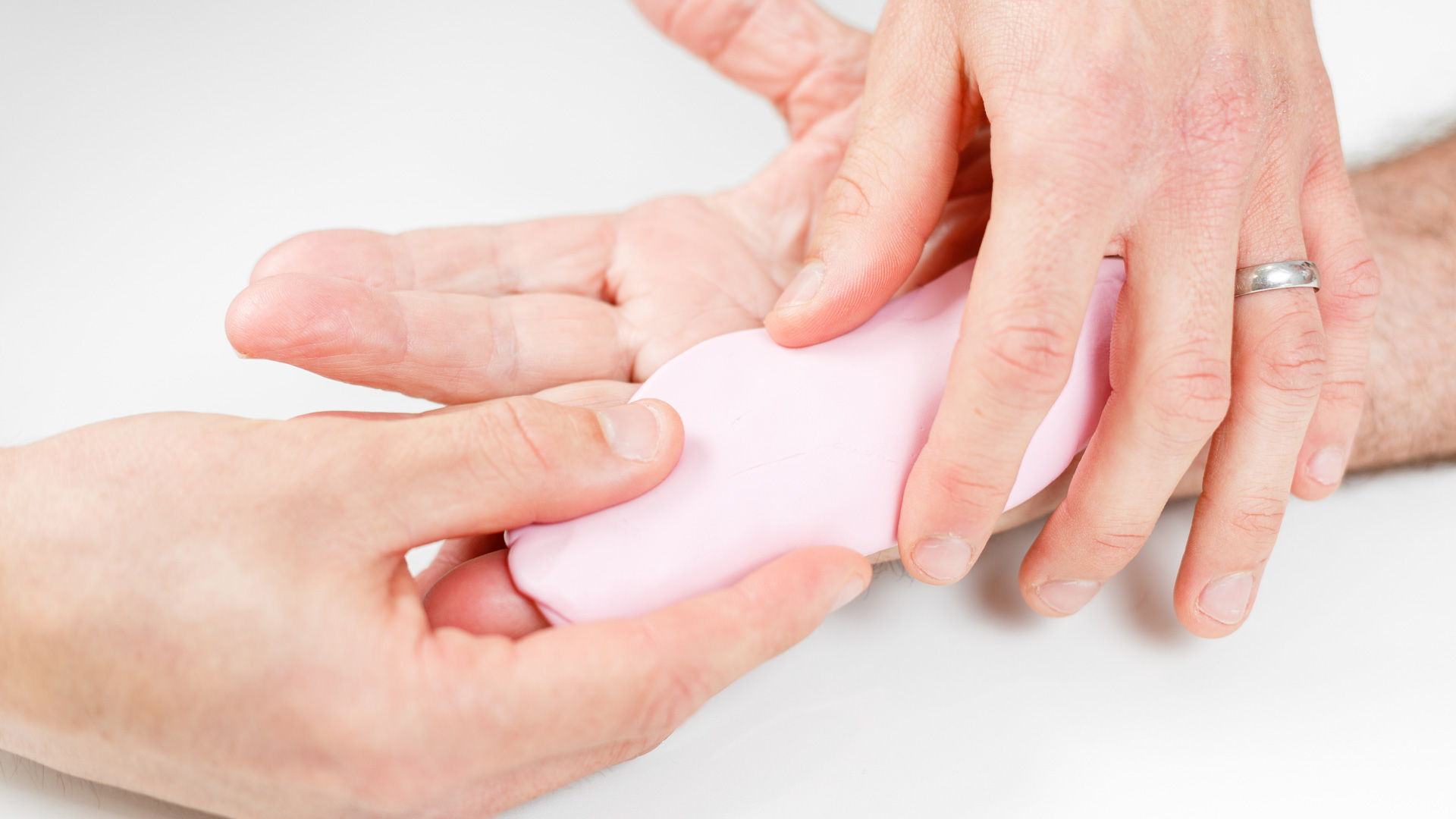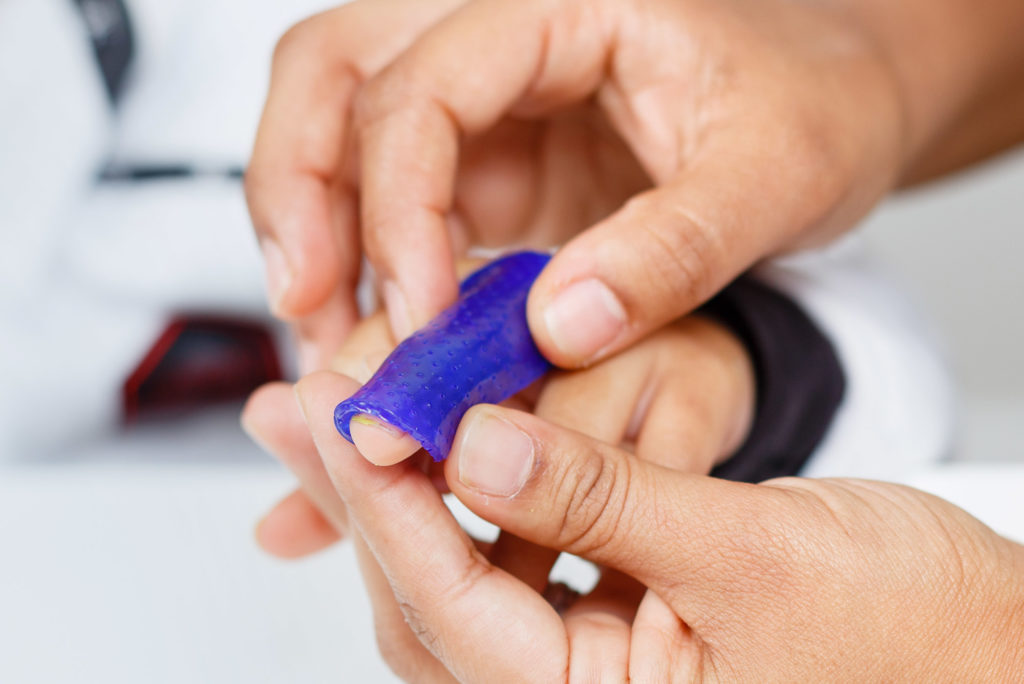It’s perfectly normal to have some sort of scaring post-surgery. One of the most basic interventions we offer for scars is massage with vitamin E cream. This can help stimulate collagen and speed up the healing process.
As hand therapists, our focus is not really about the cosmetic improvement of scars. A cut on your hand can go down through the layers and impede joint movement, so our focus is on helping scars heal to prevent this – and improving function.
Most scars are simple. In many cases, we simply educate people on the importance of touching scars to avoid hypersensitivity and so that the skin moves separately to the tissue underneath.
If you’ve been in a major accident and have deep scars that cross joints, treatment is more complex as new scar tissue can pull joints a certain way. So are conditions like Dupuytren’s – the thickening of tissue in the palm that flexes the fingers.
In these types of cases, we use silicon-based products on a mould or insert that goes under a splint. We also provide gel-based sheeting that you can use at night.
Ultimately, our goal for scar management is to soften the scar and minimise restrictions in movement.





